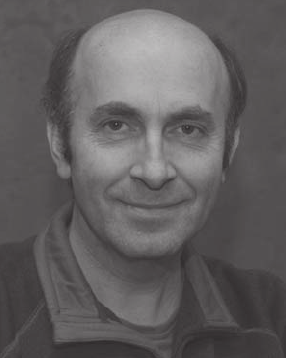Team:ENSPS-Strasbourg/Team
From 2011.igem.org
| Line 3: | Line 3: | ||
__NOTOC__ | __NOTOC__ | ||
| + | <span id="under"></span> | ||
<br><br> | <br><br> | ||
=<center>TEAM</center>= | =<center>TEAM</center>= | ||
| - | |||
<br><br> | <br><br> | ||
| Line 22: | Line 22: | ||
<DIV STYLE="text-align:justify;"> | <DIV STYLE="text-align:justify;"> | ||
| - | Vincent Wlotzko has studied mathematics and physics, for his baccalauréat in 2007, and his two years preparatory course so as to enter at ENSPS in 2009. For the continuation of his course, he has chosen a specialization in micro and nano electronics, and the “bio-systems” module is a way for him to extend his electronics skills to a living science field, to develop a new idea of applying microelectronics to synthetic biology, and also give new possibilities, between those two fields.<br><br><br><br><br><br><br> | + | Vincent Wlotzko has studied mathematics and physics, for his baccalauréat in 2007, and his two years preparatory course so as to enter at ENSPS in 2009. For the continuation of his course, he has chosen a specialization in micro and nano electronics, and the “bio-systems” module is a way for him to extend his electronics skills to a living science field, to develop a new idea of applying microelectronics to synthetic biology, and also give new possibilities, between those two fields.<br><br><br><span id="advisors"></span> |
| + | <br><br><br><br> | ||
| Line 33: | Line 34: | ||
<DIV STYLE="text-align:justify;"> | <DIV STYLE="text-align:justify;"> | ||
| - | Jacques Haiech got a M.D. degree in Mathematics and computer science in 1975 and then a M.D. and a PhD degree in Biochemistry in 1978 dealing with cell signaling (focusing on calcium signal in muscle cells). After his PhD, he has been working part time successively at NCI in Bethesda, then at Vanderbilt University and finally at Northwestern University (Chicago) while being research director at “Centre National de la Recherche Scientifique” in France, studiyng cellular calcium signals before joining the Strasbourg University as a full professor in 1997. He has founded the first synthetic biology option in an engineering school in France in 2008 along with the first participation of the ESBS-Team to the iGEM competition. Since then, he has developed collaboration with the Strasbourg engineering school of physics on “Design Methodology and Modeling of Synthetic Biosystems”. He is now working in integrating concepts of synthetic biology in personalized medicine.<br><br><br> | + | Jacques Haiech got a M.D. degree in Mathematics and computer science in 1975 and then a M.D. and a PhD degree in Biochemistry in 1978 dealing with cell signaling (focusing on calcium signal in muscle cells). After his PhD, he has been working part time successively at NCI in Bethesda, then at Vanderbilt University and finally at Northwestern University (Chicago) while being research director at “Centre National de la Recherche Scientifique” in France, studiyng cellular calcium signals before joining the Strasbourg University as a full professor in 1997. He has founded the first synthetic biology option in an engineering school in France in 2008 along with the first participation of the ESBS-Team to the iGEM competition. Since then, he has developed collaboration with the Strasbourg engineering school of physics on “Design Methodology and Modeling of Synthetic Biosystems”. He is now working in integrating concepts of synthetic biology in personalized medicine.<span id="instructors"></span> |
| + | <br><br><br><br> | ||
| Line 54: | Line 56: | ||
<DIV STYLE="text-align:justify;"> | <DIV STYLE="text-align:justify;"> | ||
| - | Christophe Lallement received the M.S. degree in engineering from the Science University of Nancy I, Nancy, France, and the Ph.D. degree in engineering from the École Nationale Supérieure des Télecommunications, Paris, France. From November 1994 to September 1997, he was a Postdoctoral Research Scientist with the Laboratory of Electronics, Swiss Federal Institute of Technology in Lausanne (EPFL), Lausanne, Switzerland, working on the characterization and modeling of the metal-oxide-semiconductor field effect transistor (MOSFET) in the development team of the Enz-Krummenacher-Vittoz MOSFET model. In September 1997, he was an Associate Professor with the Université de Strasbourg (UdS), Strasbourg, France, and the Laboratory for Physics and Applications of Semiconductors, Centre National de la Recherche Scientifique. Since September 2003, he has been a Professor with the École Nationale Supérieure de Physique de Strasbourg, Illkirch, France. He is currently with the Institut d’Électronique du Solide et des Systèmes (InESS), UdS, working on the study and the modeling of advanced devices, very-high-speed integrated-circuit hardware description language analog and mixed-signal systems, and biosynthetic systems. He is the responsible for the group “Integrated Instrumental Systems” at InESS. | + | Christophe Lallement received the M.S. degree in engineering from the Science University of Nancy I, Nancy, France, and the Ph.D. degree in engineering from the École Nationale Supérieure des Télecommunications, Paris, France. From November 1994 to September 1997, he was a Postdoctoral Research Scientist with the Laboratory of Electronics, Swiss Federal Institute of Technology in Lausanne (EPFL), Lausanne, Switzerland, working on the characterization and modeling of the metal-oxide-semiconductor field effect transistor (MOSFET) in the development team of the Enz-Krummenacher-Vittoz MOSFET model. In September 1997, he was an Associate Professor with the Université de Strasbourg (UdS), Strasbourg, France, and the Laboratory for Physics and Applications of Semiconductors, Centre National de la Recherche Scientifique. Since September 2003, he has been a Professor with the École Nationale Supérieure de Physique de Strasbourg, Illkirch, France. He is currently with the Institut d’Électronique du Solide et des Systèmes (InESS), UdS, working on the study and the modeling of advanced devices, very-high-speed integrated-circuit hardware description language analog and mixed-signal systems, and biosynthetic systems. He is the responsible for the group “Integrated Instrumental Systems” at InESS. <span |
| Line 63: | Line 65: | ||
Morgan Madec was born in 1980. He received the M.S. and Ph.D. degrees in microelectronics from the University Louis Pasteur (ULP), Strasbourg, France, in 2003 and 2006 respectively. From 2003 to 2006, he was with the Laboratoire de Physique et Application des Semi-Conducteurs (PHASE), ULP Centre National de Recherches Scientifiques, Strasbourg, where he prepared a Ph.D. thesis on the design, the simulation and the characterization of optical processors in order to speed up image reconstruction in the medical field. | Morgan Madec was born in 1980. He received the M.S. and Ph.D. degrees in microelectronics from the University Louis Pasteur (ULP), Strasbourg, France, in 2003 and 2006 respectively. From 2003 to 2006, he was with the Laboratoire de Physique et Application des Semi-Conducteurs (PHASE), ULP Centre National de Recherches Scientifiques, Strasbourg, where he prepared a Ph.D. thesis on the design, the simulation and the characterization of optical processors in order to speed up image reconstruction in the medical field. | ||
| - | He is currently a Professor Associate with the Institut d’Électronique du Solide et des Systèmes, Université de Strasbourg, Strasbourg and teaches electronics in the Ecole Nationale Supérieure de Physique de Strasbourg, University of Strasbourg. | + | He is currently a Professor Associate with the Institut d’Électronique du Solide et des Systèmes, Université de Strasbourg, Strasbourg and teaches electronics in the Ecole Nationale Supérieure de Physique de Strasbourg, University of Strasbourg. <span id="ENSPS"></span> |
His research interests include compact modeling of integrated microsensors (Hall-effect sensor, photodiode ...). Since 2008, he collaborates with a team of the Laboratoire d’Innovation Therapeutique. The aim of this work is to put the experience in microelectronics system design to good use in synthetic biology. | His research interests include compact modeling of integrated microsensors (Hall-effect sensor, photodiode ...). Since 2008, he collaborates with a team of the Laboratoire d’Innovation Therapeutique. The aim of this work is to put the experience in microelectronics system design to good use in synthetic biology. | ||
| - | + | <span id="under"></span> | |
| + | <br><br> | ||
| Line 77: | Line 80: | ||
The ENSPS (Ecole Nationale Supérieure de Physique de Strasbourg) is a French graduate engineering school. It is a part of the internationally recognized Strasbourg University (UDS). The school is located in the golden triangle of European research bounded by Alsace, Baden-Wurtemberg and Switzerland in which can be found a major part of the scientific potential of Europe. Rich in high-tech industries, this border region has developed its own international technological-exchanges. Since its foundation in 1970, research training has been a strong tradition at ENSPS through its | The ENSPS (Ecole Nationale Supérieure de Physique de Strasbourg) is a French graduate engineering school. It is a part of the internationally recognized Strasbourg University (UDS). The school is located in the golden triangle of European research bounded by Alsace, Baden-Wurtemberg and Switzerland in which can be found a major part of the scientific potential of Europe. Rich in high-tech industries, this border region has developed its own international technological-exchanges. Since its foundation in 1970, research training has been a strong tradition at ENSPS through its | ||
partnerships with a number of UDS and CNRS (Centre National de la Recherche Scientifique) research laboratories. | partnerships with a number of UDS and CNRS (Centre National de la Recherche Scientifique) research laboratories. | ||
| - | Among the different courses offered by the school, a micro and nano electronics specialization is possible during the last year of the engineering degree. As the school is also turn towards live sciences, optional modules of this course enables students to see microelectronics applied to live sciences. One of the optional modules of this course is called “synthetic biology”, and is aimed at making links between the emerging synthetic biology field and microelectronics. In this way, basic biology knowledge is provided to the students, and a project is settled so as to familiarize students with synthetic biology. The last part of this course is dedicated to make a project, and participate to the iGEM competition. | + | Among the different courses offered by the school, a micro and nano electronics specialization is possible during the last year of the engineering degree. As the school is also turn towards live sciences, optional modules of this course enables students to see microelectronics applied to live sciences. One of the optional modules of this course is called “synthetic biology”, and is aimed at making links between the emerging synthetic biology field and microelectronics.<span id="UDS"></span> In this way, basic biology knowledge is provided to the students, and a project is settled so as to familiarize students with synthetic biology. The last part of this course is dedicated to make a project, and participate to the iGEM competition. |
| - | + | <br><br> | |
Revision as of 12:17, 20 September 2011
TEAM
Undergraduates:
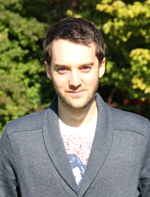
Martin Andraud
Martin Andraud started studying electronics for his Baccalauréat in 2006. After a technician diploma in electronic systems in 2008, he did a preparatory course so as to integrate ENSPS in 2009. Here, after choosing the microelectronics course, he is now interested in applying electronics to live sciences (medicine, biotechnologies). This project is so a way for him to put his knowledge in electronics into an emerging research field, synthetic biology, and apply it to a new approach of merging those two sciences.
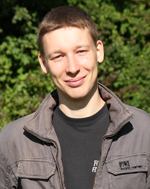
Vincent Wlotzko
Vincent Wlotzko has studied mathematics and physics, for his baccalauréat in 2007, and his two years preparatory course so as to enter at ENSPS in 2009. For the continuation of his course, he has chosen a specialization in micro and nano electronics, and the “bio-systems” module is a way for him to extend his electronics skills to a living science field, to develop a new idea of applying microelectronics to synthetic biology, and also give new possibilities, between those two fields.
Advisor:
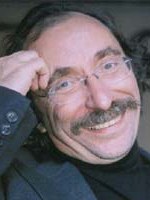
Pr. Jacques Haeich
Jacques Haiech got a M.D. degree in Mathematics and computer science in 1975 and then a M.D. and a PhD degree in Biochemistry in 1978 dealing with cell signaling (focusing on calcium signal in muscle cells). After his PhD, he has been working part time successively at NCI in Bethesda, then at Vanderbilt University and finally at Northwestern University (Chicago) while being research director at “Centre National de la Recherche Scientifique” in France, studiyng cellular calcium signals before joining the Strasbourg University as a full professor in 1997. He has founded the first synthetic biology option in an engineering school in France in 2008 along with the first participation of the ESBS-Team to the iGEM competition. Since then, he has developed collaboration with the Strasbourg engineering school of physics on “Design Methodology and Modeling of Synthetic Biosystems”. He is now working in integrating concepts of synthetic biology in personalized medicine.
Instructors
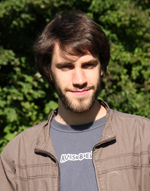
Yves Gendrault
After obtaining his bachelor's degree in Electronique, Signaux et Automatique (ESA), Yves does a Master’s degree in Micro-and Nano-Electronique (MNE) at the Université de Strasbourg (UdS). He discovers the field of Synthetic Biology during an internship in the Institut d'Electronique du Solide et des Systèmes (InESS) laboratory in Strasbourg. During this internship he creates models for several biological processes. Because Synthetic Biology is situated between engineer sciences and biotechnologies, the collaboration with biotechnologists is for him fundamental for a better understanding. In this way, he has started his Ph.D program, untitled “standardization of the design flow for synthetic biology”.
Yves has already participated to iGEM competition, with the ESBS team in 2010.
Christophe Lallement received the M.S. degree in engineering from the Science University of Nancy I, Nancy, France, and the Ph.D. degree in engineering from the École Nationale Supérieure des Télecommunications, Paris, France. From November 1994 to September 1997, he was a Postdoctoral Research Scientist with the Laboratory of Electronics, Swiss Federal Institute of Technology in Lausanne (EPFL), Lausanne, Switzerland, working on the characterization and modeling of the metal-oxide-semiconductor field effect transistor (MOSFET) in the development team of the Enz-Krummenacher-Vittoz MOSFET model. In September 1997, he was an Associate Professor with the Université de Strasbourg (UdS), Strasbourg, France, and the Laboratory for Physics and Applications of Semiconductors, Centre National de la Recherche Scientifique. Since September 2003, he has been a Professor with the École Nationale Supérieure de Physique de Strasbourg, Illkirch, France. He is currently with the Institut d’Électronique du Solide et des Systèmes (InESS), UdS, working on the study and the modeling of advanced devices, very-high-speed integrated-circuit hardware description language analog and mixed-signal systems, and biosynthetic systems. He is the responsible for the group “Integrated Instrumental Systems” at InESS. <span
Morgan Madec was born in 1980. He received the M.S. and Ph.D. degrees in microelectronics from the University Louis Pasteur (ULP), Strasbourg, France, in 2003 and 2006 respectively. From 2003 to 2006, he was with the Laboratoire de Physique et Application des Semi-Conducteurs (PHASE), ULP Centre National de Recherches Scientifiques, Strasbourg, where he prepared a Ph.D. thesis on the design, the simulation and the characterization of optical processors in order to speed up image reconstruction in the medical field.
He is currently a Professor Associate with the Institut d’Électronique du Solide et des Systèmes, Université de Strasbourg, Strasbourg and teaches electronics in the Ecole Nationale Supérieure de Physique de Strasbourg, University of Strasbourg.
His research interests include compact modeling of integrated microsensors (Hall-effect sensor, photodiode ...). Since 2008, he collaborates with a team of the Laboratoire d’Innovation Therapeutique. The aim of this work is to put the experience in microelectronics system design to good use in synthetic biology.
ENSPS
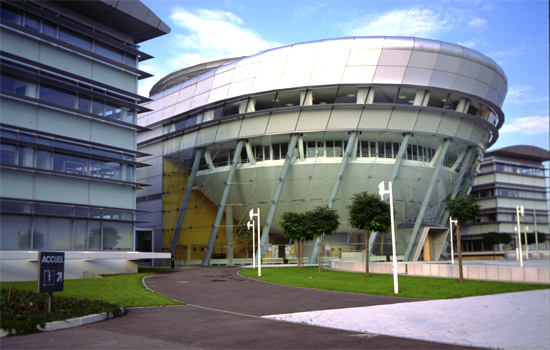
The ENSPS (Ecole Nationale Supérieure de Physique de Strasbourg) is a French graduate engineering school. It is a part of the internationally recognized Strasbourg University (UDS). The school is located in the golden triangle of European research bounded by Alsace, Baden-Wurtemberg and Switzerland in which can be found a major part of the scientific potential of Europe. Rich in high-tech industries, this border region has developed its own international technological-exchanges. Since its foundation in 1970, research training has been a strong tradition at ENSPS through its
partnerships with a number of UDS and CNRS (Centre National de la Recherche Scientifique) research laboratories.
Among the different courses offered by the school, a micro and nano electronics specialization is possible during the last year of the engineering degree. As the school is also turn towards live sciences, optional modules of this course enables students to see microelectronics applied to live sciences. One of the optional modules of this course is called “synthetic biology”, and is aimed at making links between the emerging synthetic biology field and microelectronics. In this way, basic biology knowledge is provided to the students, and a project is settled so as to familiarize students with synthetic biology. The last part of this course is dedicated to make a project, and participate to the iGEM competition.
Strasbourg University
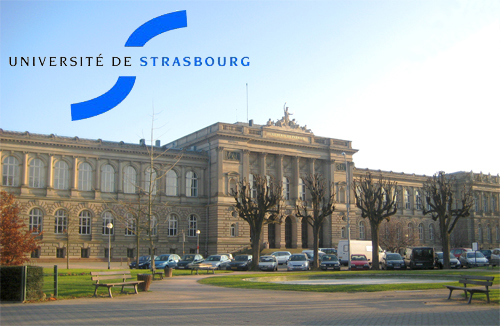
 "
"
